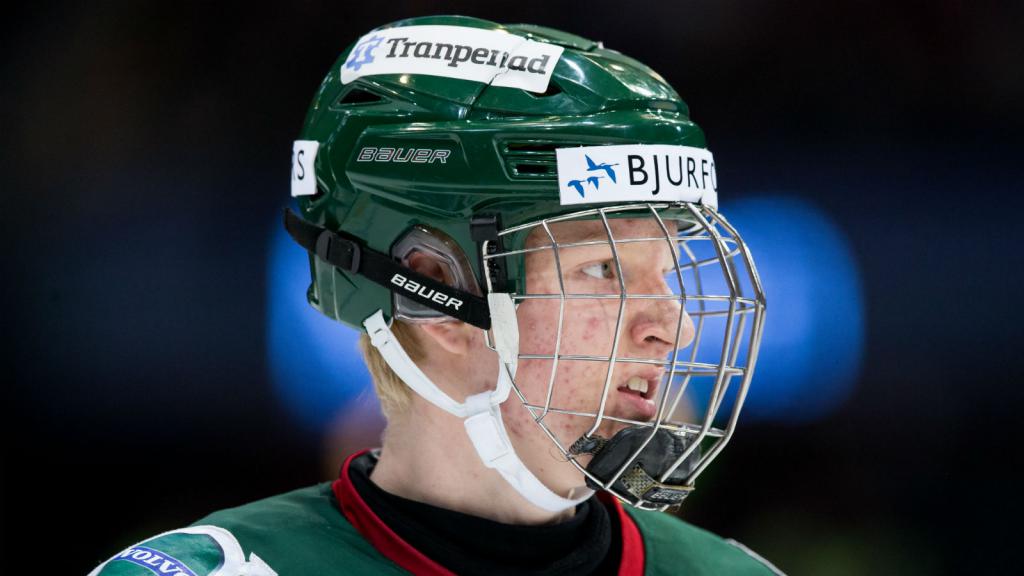The matter of talent development in Sweden

The top leagues for professional hockey in Sweden, HockeyAllsvenskan and SHL, have supplied the Swedish WJC teams with the vast majority of its skaters in the past few championships. Take this year’s roster as an example. When we published our feature on the Swedish preliminary roster you may have noticed that all fourteen of the forwards (13 from the SHL, 1 from HockeyAllsvenskan), six out of eight defenders (4 from the SHL, 2 from HockeyAllsvenskan) and one of the goaltenders all skate a regular shift with an elite-level club.
Not the respective teams’ under-20 squad, mind you, its top roster.
It isn’t all that surprising though. Within many of the European hockey associations currently at the forefront of international hockey, you will usually find a debate raging. That debate – regarding the most effective approach to develop young players – can usually be summarized in two distinct viewpoints: the player should skate a regular shift with the top roster where he can focus on learning strategies and systems, or, the player should be allowed to continue developing on a junior roster where he can dominate the opposition and focus on maximizing his offensive skill.
In Sweden, the former is undoubtedly the more prevalent mindset.
To further gain an understanding of why, one has to consider the quality of play in the top Swedish under-20 league. Unlike the North American system, there aren’t any “junior-specific” clubs here. Nine times out of ten, the under-20 teams in Sweden are connected to one of the pro clubs in either HockeyAllsvenskan or SHL, meaning both the junior team and the professional team are run with the overall best interest of the club in mind. Say you have a talented young player under the age of 20 that could potentially help the top roster right away… why wouldn’t you promote him? Even if that mean playing the prospect in a limited role, it makes sense for the club.
As such, the Swedish under-20 league can’t really be compared to its North American equivalent, the CHL – a league we’ve previously explored in one our features – that allows its players to be stars in their own right.
Neither is it fair to compare it to, say, the Russian junior league: MHL. That particular comparison (or lack thereof) comes down to simple mathematics. Sweden might be a superpower in the world of professional hockey, but as a nation it just recently passed 10 million inhabitants. Compare that to the population Russia and you understand how there is no conceivable way the Swedish junior league could keep up. Not to mention the KHL is currently considered a few notches up in terms of quality compared to the SHL, which means more talented young players are kept in the MHL.
Now that we’ve established the way things currently ARE, let’s move on to asking ourselves if that is the way it SHOULD be.
For someone like Rasmus Dahlin, a generational talent whose skill has already grown way beyond the competition amongst his peers, moving from the under-20 team of an SHL club to the top team is only natural. For someone like Adam Boqvist, also a highly touted defensive prospect in this year’s NHL Entry Draft, the discussion enters murkier waters. Granted, he’s not as proficient when it comes to the two-way game but owns a similar – some argue bigger – skill-set to Dahlin.
Should such pure offensive talents be stifled by the heavy-handedness of SHL coaches more concerned with the team winning its next game, than on developing the prospects’ innate abilities?
This is where HockeyAllsvenskan usually comes in. HockeyAllsvenskan – HA for short – offers a unique opportunity for younger players in the sense that it is not as competitive as the SHL. The amount of money involved isn’t comparable and while the stakes are certainly high, the HA clubs tend to rely on their younger talent for bigger roles at an earlier point – offering them a longer leash and focusing more on developing their abilities. This has led to many SHL clubs entering into “loan” agreements with HA clubs, not unlike the farm-team system the NHL employs with its developmental league, the AHL.
The current situation has drawn the ire of fans from both HA and SHL clubs (“we are not a farm team!” versus “stop helping other teams!”) but as long as the Swedish under-20 league lacks the flair and competitive level of the CHL or the MHL – and nothing suggests this is on the verge of changing – it is likely we will see more and more of these transactions.
Regardless of what happens in the next few years, we can be sure of one thing in the end: the debate on talent development will continue to rage with undiminished intensity.